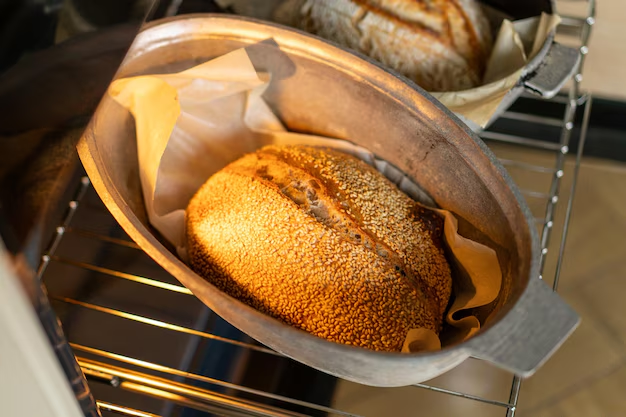How to Keep Your Bread Fresh: Extending Its Life in the Refrigerator 🥖
Bread is a universally beloved staple, but its freshness can be as fleeting as its aroma is enticing. Whether homemade or store-bought, understanding how to store bread properly in the refrigerator can significantly prolong its shelf life without sacrificing its taste or texture. If you've ever found yourself wondering, "Just how long will my bread last in the fridge?" you're in the right place. This guide will delve into the crucial aspects of bread storage, offering practical tips and expert insights to keep your bread fresher, longer.
The Dynamics of Bread Spoilage
Understanding the Shelf Life of Bread
Bread, made primarily from flour, water, yeast, and salt, varies in shelf life depending on its ingredients and storage conditions. Freshly baked bread, without preservatives, tends to last only a few days at room temperature before going stale or developing mold. On the other hand, commercially produced bread often contains preservatives that extend its life but might alter its natural texture and flavor.
Factors Influencing Bread Longevity
- Ingredients: Gluten-free bread, due to its alternative ingredients, may spoil faster than traditional wheat bread.
- Humidity and Temperature: Bread stored in humid conditions or warm temperatures can mold quickly.
- Exposure to Air: Improper sealing can cause bread to lose moisture and become stale faster.
- Type of Bread: Whole-grain and sourdough varieties generally last longer than white bread due to their denser structures and natural fermentation.
Refrigeration: Does It Help or Hinder?
Should Bread Be Refrigerated?
Refrigeration is often touted as a solution for extending the life of perishable foods. However, bread is one exception to this rule; refrigeration can fight mold growth but cause the starch within bread to crystallize, leading to staleness. This process, known as retrogradation, makes the bread tough and chewy.
Balancing Mold Growth and Staleness
The primary benefit of refrigerating bread is the reduced growth of mold. If you live in a particularly humid environment or if your bread tends to mold quickly, refrigeration can be a viable option. However, it is crucial to utilize proper storage techniques to minimize staleness.
Best Practices for Bread Storage
Keeping Bread Fresh in the Refrigerator
- Use Airtight Storage: Place the bread in a resealable plastic bag or an airtight container to retain moisture.
- Wrap in a Towel: For artisan bread, wrapping it in a cloth or towel before placing it in a paper bag can help maintain texture without trapping too much moisture.
- Check Frequently: Regularly inspect your bread for any signs of mold or staleness.
Freezing Bread for Extended Freshness
For the longest storage period, freezing bread is an excellent option. Freeze sliced bread for easy access to individual servings. When you're ready to eat, simply toast or thaw slices at room temperature.
Debunking Bread Storage Myths
Myth: Bread Never Gets Moldy in the Refrigerator
While it's true that refrigeration slows mold growth, it doesn't eliminate the risk entirely. Mold spores are naturally present in the environment, and any moisture in your storage container can encourage mold to form.
Myth: Refrigerator Bread is Always Stale
Though refrigeration can expedite the staling process, the aforementioned methods can help mitigate this effect. Proper storage practices are key to balancing freshness and longevity.
Specialized Storage: Bread Boxes and Bags
Choosing the Right Bread Box
A quality bread box provides a controlled environment with moderate temperatures and humidity levels, helping to preserve loaf freshness without refrigeration. Look for boxes with ventilation holes that promote airflow without excess dryness.
Investing in Freezer-Grade Bags
If freezing is your preferred method, invest in durable, freezer-grade bags. They provide a strong barrier against freezer burn and unwanted odors.
Practical Bread Storage Tips 📝:
- Wrap bread snugly in reusable beeswax wrap for a balance of protection and air circulation.
- Store slices separately using parchment paper to prevent sticking.
- Always allow warm, homemade bread to cool completely before refrigerating or freezing.
Understanding Mold: When to Toss the Bread
Recognizing Mold Symptoms
Mold on bread often appears as fuzzy or discolored patches, ranging from white and green to black. Not all mold is visible right away, so if your bread feels unusually moist or smells off, it's better to err on the side of caution and discard it.
Health Considerations
Consuming moldy bread can lead to gastrointestinal discomfort. Mold spores can produce mycotoxins, harmful compounds that should be avoided, especially for children, the elderly, or those with compromised immune systems.
Bread Storage FAQs
How Do I Revive Stale Bread?
Refresh stale bread by lightly sprinkling it with water and warming it in the oven for a few minutes. This rehydrates the bread and revitalizes its crust.
Can I Store Different Types of Bread Together?
Different breads placed together may alter each other's taste and texture. Store them separately if possible, especially if one is more aromatic or contains pungent ingredients like garlic or onion.
How Long Does Bread Last in the Refrigerator?
Bread will generally stay fresh in the refrigerator for about a week if stored correctly. However, it's always best to consume it sooner to enjoy optimal taste and texture.
Making the Most of Every Loaf
With bread, a little knowledge goes a long way. Understanding the factors that affect its shelf life and employing effective storage techniques can make a significant difference in maintaining its quality. Whether you choose the refrigerator, freezer, or a trusty bread box, keeping that loaf fresh is within reach. Bread might be a staple, but that doesn’t mean it can’t also be extraordinary—especially when preserved with care. So, next time you find yourself with an abundance of bread, remember these insights to savor every slice.
